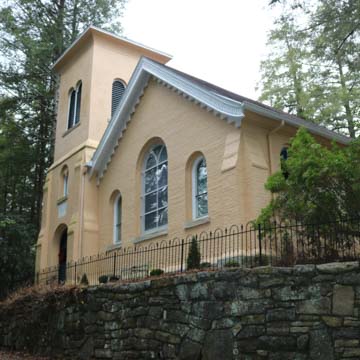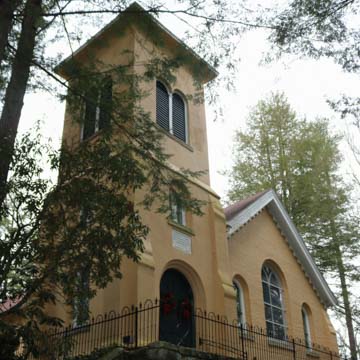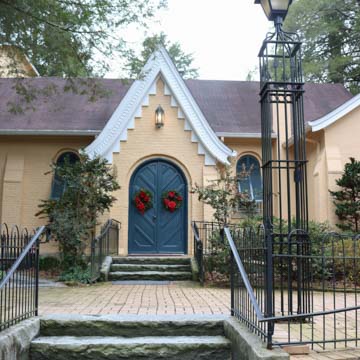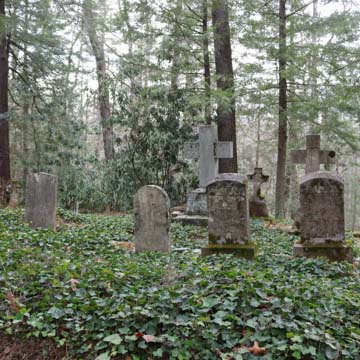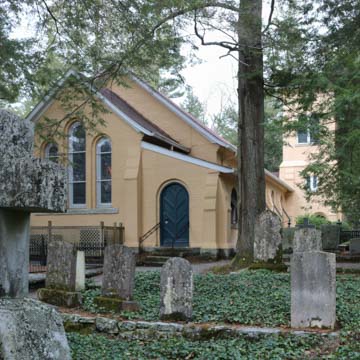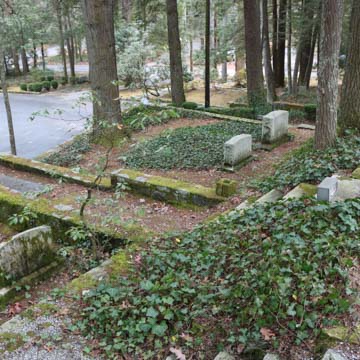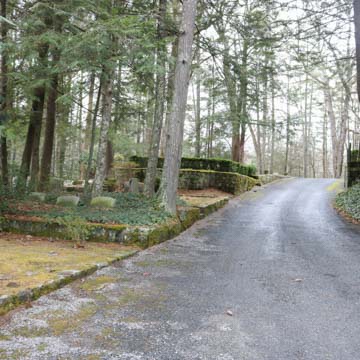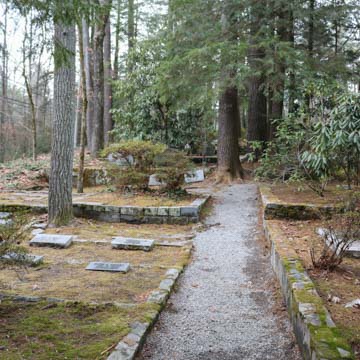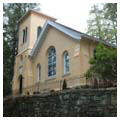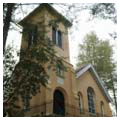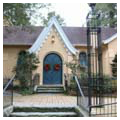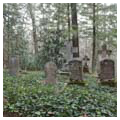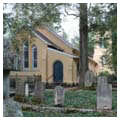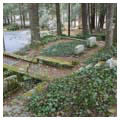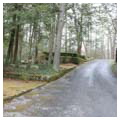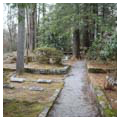St. John in the Wilderness is an English country chapel with the siting and appeal of a Tuscan hilltop church. In the early 1800s it was common for affluent families from Charleston, South Carolina, to take refuge from the heat in the mountains of North Carolina. They established a regular summer colony here in the area that they called “the Wilderness.” Prominent among this group were Charles and Susan Baring, who erected a private chapel on their estate. After the first wood-framed chapel burned down, the family began construction in 1833 on a brick chapel, which they deeded to the colony in 1836. The Episcopal chapel, called St. John in the Wilderness, was only used during the summer months; it quickly became too small. Charleston architect Edwards C. Jones completed additions and an exterior renovation in 1852 in the English country church tradition.
The original chapel and its additions were all completed using locally made bricks. The expanded chapel features a square tower and round-headed windows that contribute to the Italianate sensibility, but the top-hinged, awning-type louvered shutters convey a Charleston low-country feel. The interior is organized with a traditional center aisle flanked with wooden pews (36 of them, each approximately 10 feet wide). A series of hammer-beam roof trusses give the space a rustic appearance, and the end-axis sanctuary recess recalls an English country church. Three narrow, vertical stained glass windows with arched tops punctuate the axial view to the east end of the sanctuary at the chancel. A small baptistery sits below a large, rounded-arch stained glass window in the western wall of the sanctuary. Pipes for the organ flank the window on either side.
The church sits on a steep hillside in an extraordinary wooded landscape. The parking is downhill from the church, and visitors walk along a steep, curved path to enter the sanctuary. The churchyard and cemetery plots terrace down the slope, surrounded by iron fences, in a way that is both orderly and picturesque. Large trees mingle with the graves and provide a dense canopy overhead. Ferns, mossy patches, and gravel walkways cover the surrounding grounds.
Today the chapel is home to an active congregation that worships year round. The church and its grounds are open to the public.
References
Bishir, Catherine W., Michael T. Southern, and Jennifer F. Martin. A Guide to the Historic Architecture of Western North Carolina. Chapel Hill: University of North Carolina Press, 1999.
Bishir Catherine W. North Carolina Architecture.Chapel Hill: University of North Carolina Press, 1990.
Van Gelder, Florence, and William Van Gelder. The Pictorial History of the Episcopal Church of St. John in the Wilderness, Flat Rock, North Carolina. Flat Rock, NC: Episcopal Church of St. John in the Wilderness, 1977.












